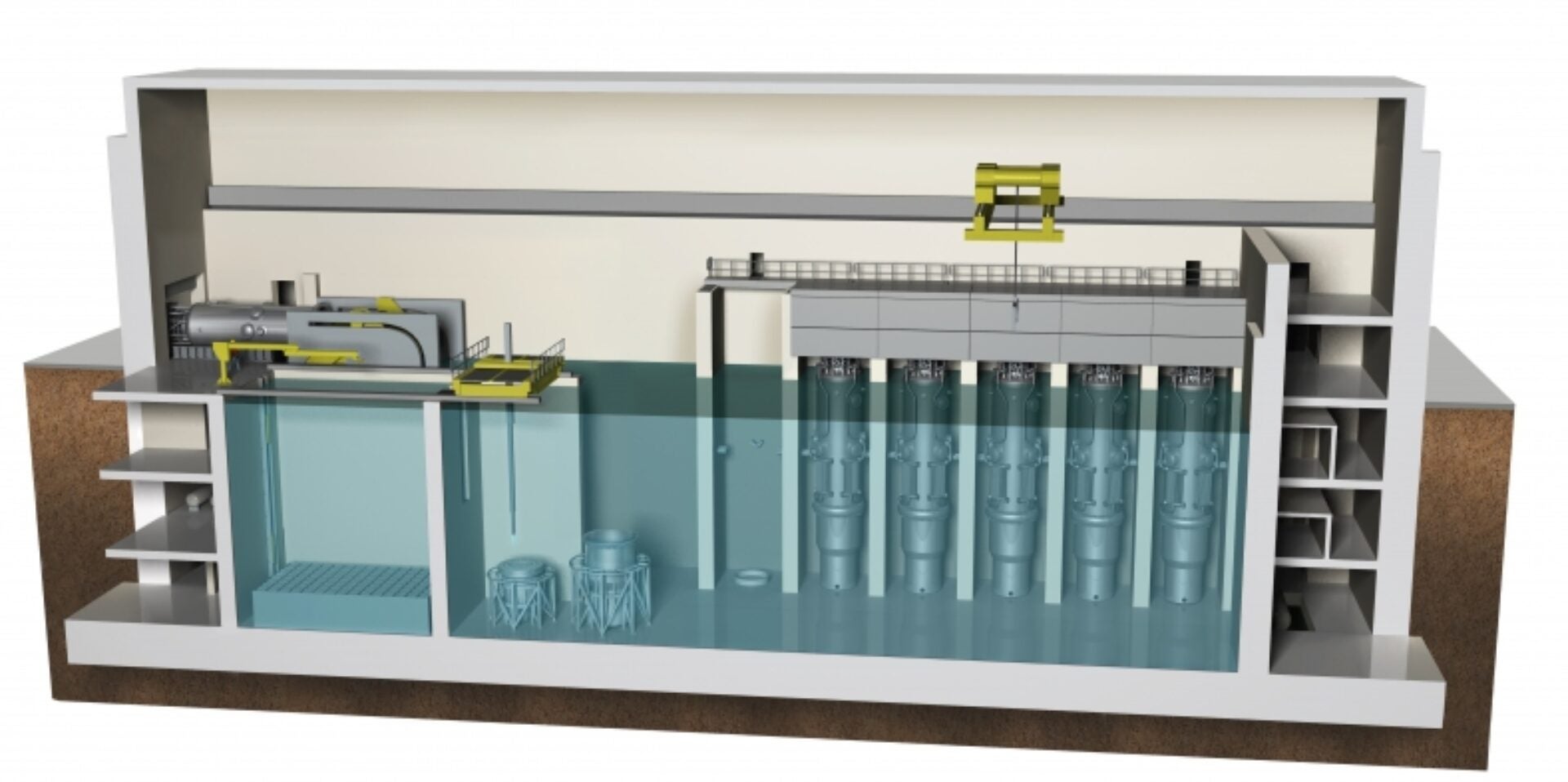
TVA Files First-Ever Application for Small Scale Nuclear Reactor
On Friday the 13th of May, the Tennessee Valley Authority (TVA) submitted the first-ever permit application to the U.S. Nuclear Regulatory Commission (NRC) for development of small modular reactors (SMR), a form of distributed nuclear energy.
This happened just a week after TVA’s board voted to sell the unfinished Bellefonte Nuclear Plant property due to lack of customer demand for power from the large-scale plant. Development of Bellefonte began in 1974 only to be put on indefinite hold in 1988. TVA spent around $4 billion on the site, which is now being prepared for auction.
Large scale nuclear power plants, generally around 1,000 megawatts of capacity, are expensive, hard to site, and complicated and time consuming to construct. Although yet to be deployed in the U.S. (deployment efforts are underway internationally), SMRs (usually under 300 MW) potentially offer a unique set of benefits compared to large scale plants.
SMRs require less capital investment, offer more flexibility in siting, are highly energy efficient, potentially offer safety benefits, and have a modular design (where the majority of the plant is assembled in a factory and transported to its final operational location) that reduces construction time and costs.
TVA, a federally-owned corporation, submitted its early site permit (ESP) application to the NRC in order to assess the suitability of the 1,200 acre Clinch River site, west of Knoxville, as home to two or more SMRs. The site review process is expected to take about three years. If TVA decides to move forward it would have to submit another application for a license to build and operate the SMRs.
The U.S. Department of Energy is co-funding the ESP application work with TVA, as part of a five-year interagency agreement finalized in July 2015, which also includes development of the combined operations and licensing agreement TVA will need to build and run the SMRs.
TVA’s ESP application is significant not only because it is the first of its kind, but because it will likely serve as the test case for the development of a wide array of regulatory and policy frameworks for deployment of SMRs.
In 2012, NRC issued a report to the U.S. Congress identifying growing commercial interests in deployment of advanced reactor systems (including SMRs) and highlighting a variety of regulatory, policy, research, planning and other needs to handle licensing requests for these first-of-their-kind technologies.
For SMRs, some of these generic issues were identified in a 2011 report and included, for example: licenses to prototype SMRs, SMR manufacturing license requirements, operational programs (e.g. inspections and testing) for SMRs, industrial facility use of SMRs, ability of SMRs to withstand aircraft impacts, insurance and liability issues, environmental review, and staffing SMR operations.
Developing a complete regulatory framework for SMRs will reduce the significant regulatory uncertainty associated with investing in deployment of these new technologies. Recently, the topic has been gaining significant congressional interest and debate. For example, a Senate vote on S. 2795 scheduled for today, and a Senate Energy and Natural Resources Committee hearing and House vote on H.R. 4979 both scheduled for tomorrow.
In general, some lawmakers are interested in streamlining the SMR regulatory process through new legislation, while NRC maintains it has made significant progress on developing a new regime already and current authorities allow the agency to remain flexible.
Congressional action may or may not change the course for TVA’s ESP application. In spite of Congressional actions, TVA’s efforts still mark a major step forward in the quest to understand the viability of distributed nuclear technology, which could be extremely important to the global strategy to reduce carbon emissions.
Christina Simeone
Kleinman Center Senior FellowChristina Simeone is a senior fellow at the Kleinman Center for Energy Policy and a doctoral student in advanced energy systems at the Colorado School of Mines and the National Renewable Energy Laboratory, a joint program.

